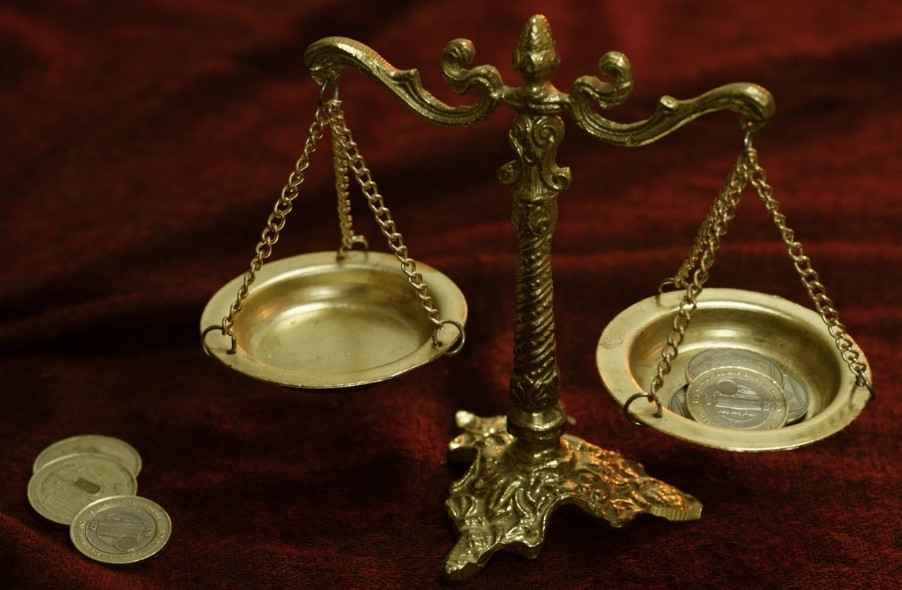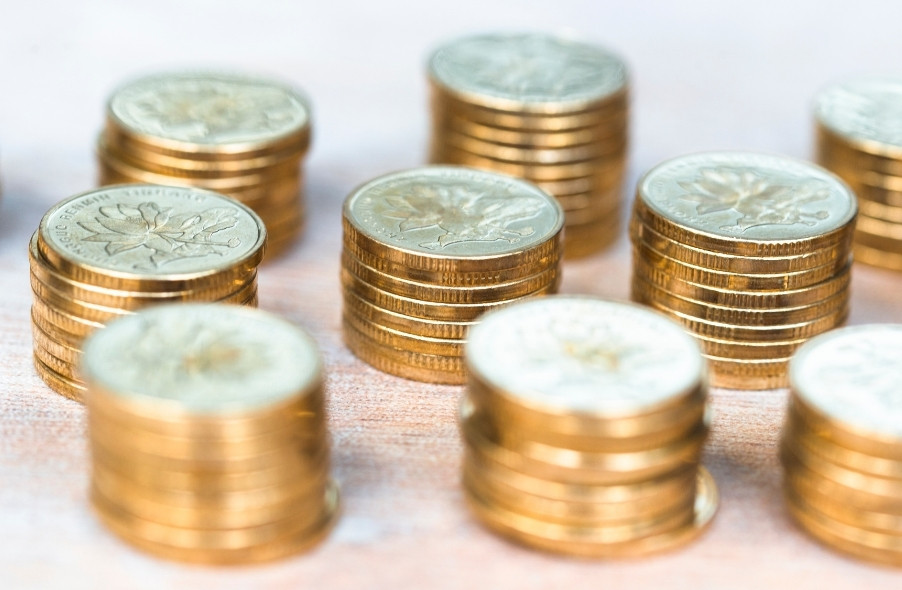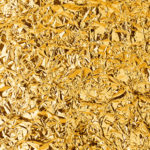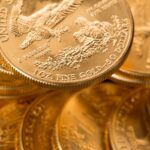Ever since the physical currency has become the primary means of conducting financial transactions, coin minting has been the cornerstone of all developed economies. The ancient world relied on minting precious metals such as silver and gold into coins, which were later used to oil the machine of commerce, so to speak, as well as a means of storing wealth for kings, emperors, and other rulers.
For almost as long as there have been coins, however, counterfeiters have spotted a great opportunity to make a fortune by creating less valuable copies of gold coins and passing them off as real ones. Early counterfeiters created clay molds of original coins and cast coins in their likeness from metals similar to gold. The spread of gold coin counterfeiting was so rapid that strict laws were quickly drawn up against it, often punishing counterfeiters with death.
Over the years, counterfeiting techniques have evolved, arriving at a method that remains popular even today: coating or covering cheap metal alloys with gold to create almost perfect copies that are hard to detect. Modern counterfeiters still rely on this method, although the sophistication of alloys and coating methods have made tremendous leaps.
Counterfeiting in the Modern World
One might ask why counterfeit coins are still a thing today. After all, the whole planet has moved beyond gold and silver as major types of currency used for financial transactions. Even modern banknotes are slowly disappearing and giving way to digital transactions and currencies.
The majority of new gold and silver coins minted are either special, promotional efforts for consumers who may wish to own a souvenir of times past, or special regulated gold coins used for trading and investing in gold.
The value of old gold coins, collected and sold as antique collectibles or even art pieces, greatly appeals to modern counterfeiters. Prices of art and collectibles have been increasing steadily over the decades, and some rare gold coins can fetch huge amounts compared to their actual value in gold. This is an added incentive for counterfeiters to deceive collectors and the general public by producing high-quality copies.
How to Spot Gold Coin Counterfeits and Avoid Fraud
The popularity of investing in gold bullion and coins, as well as collectible gold coins, is on the rise. During times of crisis and economic uncertainty, people tend to turn to gold as one of the best and most secure investments. The last thing they want to worry about is some scammer selling them counterfeit gold coins at a “special price.”
We have prepared a list of things you can do to minimize the chance of getting scammed and acquiring counterfeit gold coins. By any means, this is not a complete list, as professionals who deal with counterfeiters have dozens of other high-tech methods to analyze coins. Still, most of those things are not accessible to laypeople.
If you would like to make sure that you are purchasing real gold coins that hold true value, be sure to take the following steps.
Always Purchase Gold Coins From Registered Reputable Dealers
By far the most efficient way to minimize the risk of acquiring counterfeit gold coins is to avoid any shady and illegal channels in the first place by choosing a dealer or broker that is registered for buying and selling gold coins and has a solid reputation in the community. There is no 100% guarantee that all registered dealers follow the rules and do not engage in counterfeiting, but the chance of getting scammed is minimal.
If the dealer is trying to push particular gold coins on you or offering a special discount for no apparent reason, that should be a major red flag. Another is when dealers offer gold coins way below market value.
Perform a Magnet Test on the Coins
Coins with a high concentration of gold will not respond during a magnet test since gold as a precious metal is not susceptible to magnetic forces. Counterfeit gold coins often contain inexpensive metals that can be magnetized, so a simple magnet test is an easy way to ferret out a scam. Modern counterfeiters have become increasingly sophisticated and use non-magnetic alloys when minting counterfeit coins, so a magnet test might not work on those occasions.
Examine the Mint Markings and Coin Details
This step only applies to those who are knowledgeable in the field and can spot the inconsistencies in counterfeit gold coins. Real gold coins have standardized mint markings that an expert can easily spot. Remember that counterfeiters do not have the original molds used for casting the gold coins in the mint. Rather, they must use a real gold coin as a model to create their own casts. This often leads to a lack of detail or inaccuracies that seem invisible at first glance, but cannot escape a trained eye. If you are considering a sizeable investment in gold coins, consider taking some to be inspected by a trained professional.
Weigh and Measure Gold Coins

Modern gold coins all adhere to strict rules and regulations that determine their dimensions and weight. The differences between individual coins are tiny and nearly indistinguishable except when measured with professional equipment. Professionals who deal with gold coins are aware of the tolerances and allowed discrepancies among the individual coins. By using precise measuring equipment, it is quite easy to identify major differences among individual coins as long as you know what you are looking for. Counterfeit coins are more likely to have inconsistencies in size and weight.
Compare the Price
One thing that should have you running for the hills is being offered a great deal on gold coin pricing. Always do your homework and compare the prices of gold coins to what the market is offering. Anything with a major difference in price is more likely to be a potential scam. There is no real reason for gold brokers to offer gold coins at special discount prices given that they make their living from commissions.
Perform a Stack Test
Gold coins that come from official, registered mints undergo various inspections to make sure that they are identical in size, weight, and shape. A simple test you can perform to check for consistencies in gold coins is the stack test. Take a handful of gold coins and start stacking them on top of each other. Real gold coins should be easy to stack, creating a solid, balanced stack without any major aesthetic differences.
Suppose for any reason the stack seems unstable or coins seem to have unusual bumps, slopes, or parts sticking out from the perfect stack. In that case, it might be best to examine them in detail or ask for a professional opinion before purchasing them.
Ping, Ping, Ping
One of the oldest tests for counterfeit gold coins is the ping test. Since the early days, experts have noted that gold coins produce a specific, high-frequency ringing sound once struck against a hard surface or another gold coin. The ping of gold coins seems to last longer than regular, non-precious metals. In contrast, counterfeit coins contain other, inexpensive metals that produce a more muted and dull sound when struck against a hard surface, and the ringing is much shorter.
Specific Gravity
The specific gravity test is one of the most advanced tools available when it comes to telling real gold apart from counterfeit one. The testing procedure does require a lab and plenty of equipment that might not be available to regular people. Still, we believe that it is important to explain the process.
Gold coins are submerged in water, and a series of measures are taken to determine the specific gravity of gold coins. For gold, the specific gravity of the coins should be around 19.3. If your coins show a specific gravity that is way over or under the 19.3 mark, the chances are that they are cheap knockoffs.
Check for Conductivity
Gold coins are excellent conductors of heat and electricity, which makes sense since gold is often found in high-quality conductors and cables. An easy test for conductivity requires nothing but an ice cube. You will need something for comparison, so a genuine gold coin is a must. Place an ice cube on top of both the original gold coin and the suspected counterfeit. Coin made from gold will quickly trigger the melting of the ice cube, while those made from lesser metals will do this at a slower pace. The more conductive the material is, the quicker it will melt the ice cube.
Feel free to find other ways you can check whether your gold coins are real or not on your own. Just make sure that all the tests make sense and are backed by reputable science.
Investing in gold is one of the best decisions you can make with your money. If you would like to put away some savings for your retirement or are just trying to add a revenue source and diversify your portfolio, gold provides an excellent opportunity for long-term profits and financial security.
Buying gold coins as an investment should be done through registered, reputable gold exchanges and brokers. Check out our offer of gold exchanges at Learn About Gold and find the one that best suits your needs.





